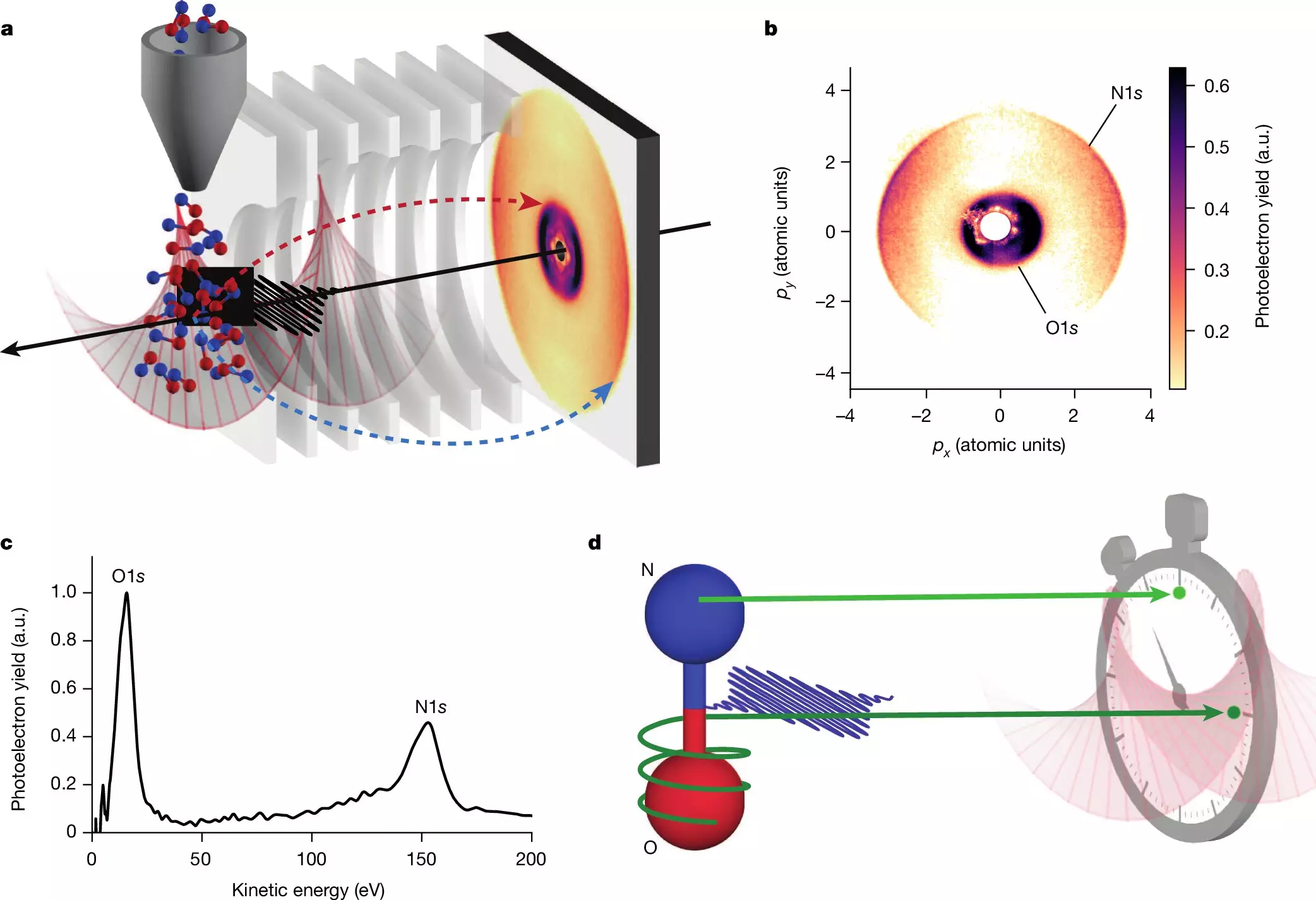In a landmark achievement, an international team of scientists has unveiled profound insights into the nature of electron activity at the molecular level, specifically when subjected to X-ray exposure. This investigation, which reports on the existence of incredibly small time delays in electron behavior, enhances our understanding of attosecond delays—the briefest intervals imaginable, lasting merely one quintillionth of a second. The approach used in this study, utilizing intense X-ray flashes generated by lasers, marks a significant advance in the exploration of atomic interactions, providing researchers with a powerful new tool to dissect the intricate dance of electrons within atoms.
The significance of this breakthrough lies in the ability to track and measure the fleeting moments that govern how electrons respond to X-rays. When electrons are released due to X-ray excitation, they engage with another type of particle, commonly referred to as the Auger-Meitner electron. This interaction leads to a secondary hold-up in their movement, an effect that has eluded detection in previous studies. According to co-author Lou DiMauro, a physics professor at The Ohio State University, these findings not only challenge our existing paradigms of molecular dynamics but also open up potential avenues for innovative research in a variety of scientific fields.
Published recently in the esteemed journal Nature, this study showcases remarkable advancements in both technology and methodology. Historically, researchers grappled with the complexities of studying attosecond delays, often hindered by a lack of advanced instrumentation. The situation has since evolved drastically, partly due to the groundbreaking work of Pierre Agostini, who, in recognition of his contributions to the development of light pulse techniques for electron dynamics, received the 2023 Nobel Prize in Physics.
A pivotal component of the current research was the use of the Linac Coherent Light Source (LCLS), a sophisticated free electron laser housed at Stanford University’s SLAC National Accelerator Laboratory, which facilitates the generation and visualization of attosecond pulses. By leveraging the capabilities of the LCLS, the team focused their investigation on nitric oxide molecules and the behavior of electrons localized near the molecule’s oxygen core. Their findings revealed unexpected delays of up to 700 attoseconds, prompting the researchers to rethink existing theoretical frameworks concerning electron interactions and dynamics.
As co-author Alexandra Landsman indicated, this exploration unveiled the astonishing complexity underpinning the behavior of deeply bound electrons within an atom. This complexity suggests that the traditional models used to describe light-matter interactions may be inadequate, necessitating further refinement and understanding of the underlying mechanisms at play. The researchers observed that when electrons are extracted from the depths of an atom, the dynamics involved are far more intricate than previously assumed, indicating a rich tapestry of interactions that warrants deeper investigation.
This intricate behavior not only fosters a re-evaluation of electron dynamics theory but also implies promising implications for practical applications, particularly in fields like cancer diagnostics. By better understanding intra-particle behavior, scientists may eventually harness these insights for developing cutting-edge technologies aimed at early cancer detection. This potential for real-world application is brilliantly encapsulated by DiMauro, who expresses optimism about how advances in attosecond science could illuminate nature in ways previously thought unattainable.
The repercussions of these findings extend well beyond molecular dynamics alone. As scientists aspire to bridge the gap between experimental results and theoretical descriptions, it becomes increasingly vital to harness this knowledge for broader scientific endeavors. Investigating attosecond delays might enable researchers to probe matter at an unprecedented scale, potentially unraveling many of the foundational mysteries within physics and chemistry.
Looking ahead, the excitement within the scientific community continues to grow as researchers anticipate the myriad possibilities that attosecond pulses might unlock. As DiMauro aptly states, the scope for exploring innovative scientific frontiers using these rapidly evolving technologies is immense. In this age of rapid scientific advancement, the potential for discovery in understanding the behavior of matter at the most fundamental levels beckons researchers to delve into the unknown with renewed vigor.


Leave a Reply